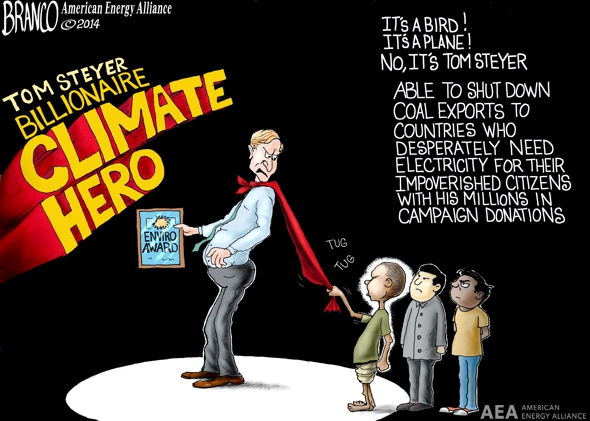Institute for Energy Research Founder and CEO Robert Bradley published the following op-ed last month in the Findlay Courier on the University of Dayton’s decision to divest from fossil fuels:
Citing “the negative consequences of climate change,” the board of Trustees of the University of Dayton (UD) recently voted to divest its oil, natural gas, and coal stocks. By ridding its $670 million investment pool of fossil fuels, UD hopes to protect “the world’s most vulnerable people” and continue its commitment to “human rights.”
Such investment politicization might please some or many associated with the private Catholic school, but it fails on the merits. The human condition has been vastly improved by fossil fuels, and more than one billion individuals today desperately need electrification at a scale and at a cost that only fossil fuels can provide.
In an email message to alumni, UD President Daniel Curran’s claimed “moral responsibility” for the divestment. But consumers (short of government coercion) chose fossil fuels because they are more affordable, reliable, and convenient compared to nuclear power, wind power, and (on-grid) solar power.
Oil, gas, and coal deserve respect, even profound gratitude. The market share of renewable energy—wood, dung, falling water, and later whale oil—was 100 percent for most of mankind’s existence. Such energy poverty changed when the chemical properties of carbon-based energy fueled the technical and engineering advances of modern life. This dense-for-dilute energy equation has not changed.
Fossil fuels are a feedstock for medicines that have saved countless lives and led to the development of fertilizers that have greatly increased crop yields to feed the hungry. They also have made heating and cooling, transportation, refrigeration, cooking, and myriad other staples of our lives affordable and dependable.
But this reality is being overlooked at those colleges, universities, non-profit organizations, and local governments where pressure groups have made decision-makers feel guilty about owning fossil fuel stocks. This leads to the assumption that divestment is good (it is not) and might make a difference (it will not).
Consider the facts. U.S.-side carbon dioxide reductions are increasingly being swamped by non-U.S. CO2 emissions, led by coal plants in India and China serving non-electrified towns and villages. And the U.S. Environmental Protection Agency credits natural gas—a fossil fuel—with reducing U.S. greenhouse-gas emissions. An April EPA study shows that U.S. carbon emissions declined 3.8 percent between 2011 and 2012 thanks to natural gas replacing coal to generate electricity.
Fossil-fuel stocks also have provided a good if not superior rate of return in UD’s and other university’s investment portfolios. Such investments have been judged as among the best investments for anyone wanting a solid, risk-adjusted return. One analysis found that a 2.1 share in oil and natural gas companies in 2010–2011 by colleges and universities generated 5.7 percent of all endowment gains.
Retirees, including school teachers and firefighters, have experienced similar results. Of the top five state pension funds operating in 17 states, Sonecon found that oil and gas company shares have outperformed all other stock investments by a seven-to-one ratio.
Many college and university administrators are aware of these financial benefits. Tufts’ President Tony Monaco decided to “refrain from divestment…primarily because of the significant anticipated negative impact on Tufts’ endowment.” Similarly, Harvard University President Drew Faust rejected divestment because the endowment is a “resource,” she wrote, “not an instrument to impel social or political change.”
When asked at a town hall meeting whether he would divest, University of Colorado President Bruce Benson said simply, “I’m not going to do that.” His reasoning is explained in a reprinted editorial in Boulder’s Daily Camera which calls divestment a “feel-good policy that would accomplish little,” because “modern society utterly depends on” fossil fuels.
“One of the great mistakes is to judge policies and programs by their intentions rather than their results,” economist Milton Friedman was fond of stating. In fact, as energy philosopher Alex Epstein put it, fossil fuels have made a unsafe planet safe, not a safe planet unsafe.
UD officials should not only rate oil, gas, and coal investments on their business merits. They should welcome the wider benefits of modern energy. Such would be in keeping with the Association of Catholic Colleges and Universities’ stated mission “to advance the common good.”
—–
Robert L. Bradley Jr., is CEO of the Institute for Energy Research, and the author of seven books on energy history and public policy. He blogs at www.masterresource.org.





